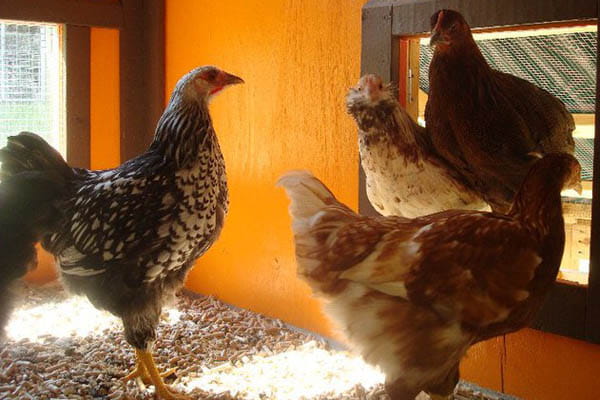Double Lives: Ken Lacovara Raises Tiny Dinosaurs in his Backyard

- Drexel Environmental Collaboratory Releases Cross-Sector Findings on Severe Weather Recovery Challenges
- How and When Could AI Be Used in Emergency Medicine?
- Video Game Design Reaches New Heights in 'Skyscraper Games'
- MXene Current Collectors Could Reduce Size, Improve Recyclability of Li-Ion Batteries

For Ken Lacovara, an associate professor in the College of Arts and Science’s Biodiversity, Earth and Environmental Science (BEES) department, a typical day of studying prehistoric fossils might begin when he eats eggs from the dinosaurs roaming his backyard.
Most people would call those dinosaurs “chickens,” though.
“Chickens are dinosaurs,” he said. “Any bird, from a hummingbird to a penguin, is a dinosaur. All the dinosaurs that you typically think of went extinct 65 million years ago, except birds.”
Ground birds like chickens and turkeys are less evolved than other birds like robins or parakeets, which is why they resemble dinosaurs more in looks and anatomy. Contrary to “Jurassic Park,” Lacovara says that Velociraptors were really the size of turkeys. Fowl lineage can be traced back to the age of dinosaurs through fossils of early birds and their predecessors, and recent reports suggest that many dinosaurs had feathers.
Like many paleontologists, Lacovara classifies birds as “avian dinosaurs,” and other dinosaurs like the Tyrannosaurus rex or Velociraptor as “non-avian dinosaurs.”
At Drexel, Lacovara uses 3-D printing technology to create and test scale models of fossil bones to better understand how prehistoric animals moved in their environment. But he gets a little idea about how that might have looked whenever he glances at his backyard.
“I’ve watched a chicken going after a mouse. It looks like a little T. rex going after its prey,” he said.
Lacovara currently houses seven free-range heritage-breed chickens in the chicken coop he built. The chickens each lay one egg a day, and his wife has estimated that they have so far gathered more than 2,000 eggs.
“If you’re a paleontologist and you want to have a dinosaur, you get a chicken,” he joked.
Is it common for paleontologists to raise their own chickens?
“No,” Lacovara admitted. “Not exactly.”
Though he mostly started raising chickens three years ago to show his son where food comes from, he does appreciate the connection to his work.
There are other benefits to keeping avian dinosaurs in the backyard. The chickens improve the backyard’s ecosystem by enriching the soil and eating pests like ticks, and also make positive contributions to their owner’s diets.
Lacovara said the difference between a store-bought egg and an egg from his backyard is “the difference between eating Cheetos instead of a piece of fine cheese.”
Lacovara’s family also enjoys fresh produce from his organic garden, which produces enough tomatoes to last through winter. He raises honeybees in the beehives in his backyard, too.
As a firm believer in the DIY ethic, Lacovara built a top-bar hive, a log-like hollow wooden box to keep the bees in, which he says is a gentler way of keeping bees than the traditional beehives. He doesn’t have a beekeeper suit, but that hasn’t stopped him from sawing a branch off an oak tree to collect a swarm of bees.
“We try to spend a lot of free time producing things instead of consuming,” Lacovara said.
But he says that doesn’t mean he’ll be eating the dinosaurs in his backyard anytime soon.
“We won’t ever eat the chickens for dinner,” Lacovara said. “They have names!”
In This Article
Drexel News is produced by
University Marketing and Communications.
